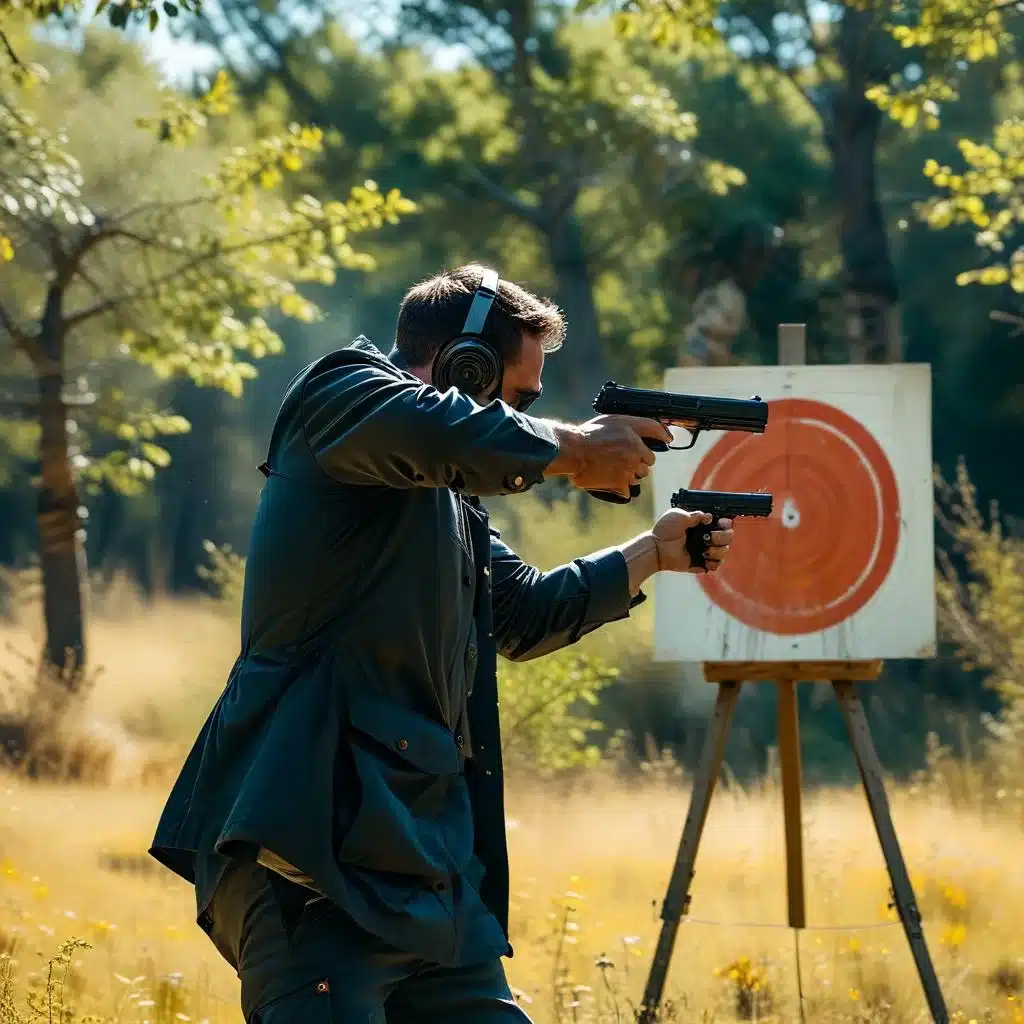Table of Contents
Whether you’re a seasoned sharpshooter or just starting to dip your toes into the world of shooting sports, there’s always room for improvement. Enhancing your shooting skills can be a fulfilling endeavor, not only boosting your performance but also increasing your enjoyment of the sport.
Understand the Basics
Grip and Stance
Before diving into complex techniques, it’s crucial to revisit the basics. A solid foundation is key to advanced skills.
- Grip: Hold your firearm in a way that feels natural yet firm. The grip should allow you to align your sights easily without straining your hand or wrist.
- Stance: Whether you prefer the Weaver stance or the isosceles, ensure your body is balanced and stable. Feet should be shoulder-width apart, with knees slightly bent to absorb recoil.
Sight Alignment and Sight Picture
Proper alignment of your sights is critical:
- Sight Alignment: This is the relationship between your eye, the rear sight, and the front sight. Ensure these three points form a straight line.
- Sight Picture: This involves the correct placement of the aligned sights on the target. Consistency in this area greatly improves accuracy.
Practice Makes Perfect: Drills to Drill
To elevate your shooting skills, incorporate various drills into your routine. Here’s a mix to get you started:
- Dry Fire Drills: Without using ammunition, practice pulling the trigger. This helps in mastering trigger control and improving muscle memory.
- Live Fire Drills: These should be done at a range:
- Slow Fire Accuracy: Focus on hitting a specific spot on a target from various distances.
- Rapid Fire: Helps improve handling recoil and resetting your aim quickly.
- Moving Targets: Practice on moving targets to simulate real-life scenarios. This improves both your timing and aiming skills.
Enhancing Your Skills with Optics
Selecting the Right Optics
Integrating optics like Red Dot Sight into your shooting practice can dramatically improve accuracy and confidence. Here’s how to select the right optics to elevate your shooting experience:
- Scope – For long-range shooting, a good rifle scope can be the difference between hitting and missing your target. Look for scopes with clear magnification and robust build quality. Consider the type of reticle (crosshair style), which can vary from simple dots to complex grid patterns, depending on your preference and needs.
- Red Dot Sights – Ideal for rapid target acquisition at closer ranges, red dot sights are popular among tactical shooters and hunters alike. These optics show a simple red dot as the aiming point, which speeds up the aiming process and helps in quick reaction scenarios.
- Holographic Sights – Similar to red dot sights, but generally provide a more detailed reticle. They are excellent for situations that require fast aiming and are equally effective in low light conditions.
Adjusting and Maintaining Optics
Proper adjustment and maintenance of your optics can ensure they contribute positively to your shooting accuracy.
Zeroing Your Optics – This is the process of adjusting your sight so your point of aim is your point of impact. This is critical for accuracy. Spend time at the range adjusting the windage and elevation settings to get a perfect zero at your desired distance.
Regular Maintenance – Just like your firearm, your optics need regular care. Ensure lenses are clean and free of dust, and always check that mounts and fittings are secure before use. Moisture and dirt can impair functionality, so a well-maintained optic is as important as a clean gun.
Practical Application of Optics
Once you have your optics set up, it’s important to practice with them to get accustomed to their functionality. Here are a few tips:
Practice under different conditions
Lighting and weather can affect how you use your optics. Practice in various conditions to understand how these factors affect your aim and visibility.
Use them in drills
Incorporate optics into your shooting drills. Switch between different types of optics if possible to understand their advantages and limitations in different scenarios.
Advanced Techniques
Breathing Control
Your breathing can significantly affect your shots. Practice the following technique:
- Breathe in and out deeply.
- Pause after exhaling a comfortable amount, and hold while you take the shot.
- Resume normal breathing after the shot.
Mental Visualization
Sports psychologists tout the benefits of visualization in all sports, including shooting. Spend a few minutes before your practice visualizing a successful shooting session. Imagine yourself hitting the target accurately and adjusting seamlessly to any misfires or mishaps.
Gear and Maintenance
Choosing the Right Equipment
Selecting the right gun and ammunition is essential. Not all firearms are suited for everyone. Consider the following:
- Weight and Size: Make sure the firearm feels comfortable in your hand.
- Caliber: Choose a caliber that suits your shooting goals and one you can handle comfortably.
Regular Maintenance
Keep your firearm in top condition with regular cleaning and maintenance. A well-maintained gun is more reliable and accurate. Make it a habit to clean your gun after each use.
Join a Community
Leverage Social Learning
Joining a club or online community can provide support and valuable insights from more experienced shooters. Benefits include:
- Shared Knowledge: Learn tricks and tips that you might not find in manuals or online articles.
- Motivation: Being part of a community can increase your motivation to practice regularly.
Conclusion
Improving your shooting skills is a blend of mastering the basics, practicing regularly, adopting advanced techniques, and engaging with a community. By following these guidelines, you’ll not only see improvements in your shooting abilities but also enjoy the sport more deeply. Remember, the key to success in any endeavor is consistency and a willingness to learn and adapt.


